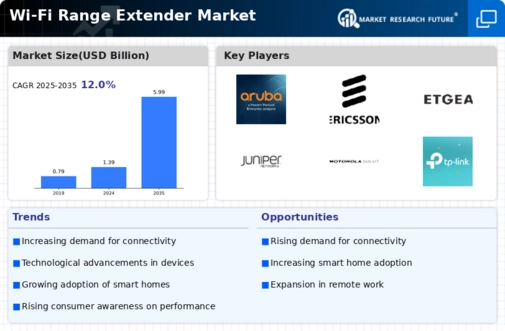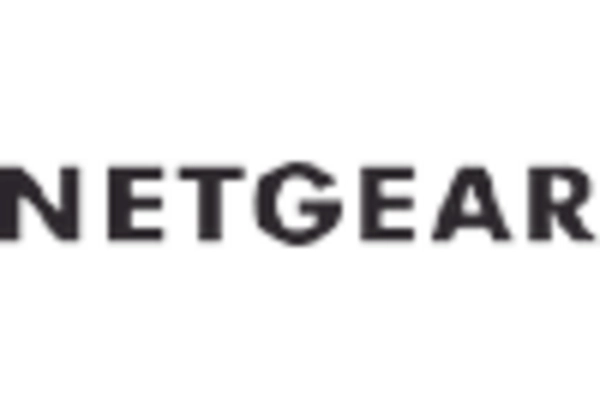The Wi-Fi Range Extender Market is characterized by a dynamic competitive landscape, driven by the increasing demand for seamless connectivity in both residential and commercial environments. Key players such as TP-Link (CN), Netgear (US), and Linksys (US) are at the forefront, each adopting distinct strategies to enhance their market positioning. TP-Link (CN) focuses on innovation, frequently launching new products that cater to the evolving needs of consumers, while Netgear (US) emphasizes partnerships with service providers to expand its reach. Linksys (US), on the other hand, is investing in digital transformation initiatives to improve customer engagement and streamline operations. Collectively, these strategies contribute to a competitive environment that is both fragmented and rapidly evolving, as companies strive to differentiate themselves through technology and service offerings.
In terms of business tactics, companies are increasingly localizing manufacturing to reduce costs and enhance supply chain efficiency. This approach is particularly evident in the Wi-Fi Range Extender Market, which appears moderately fragmented, with several players vying for market share. The collective influence of key players is significant, as they leverage their brand recognition and technological expertise to capture consumer interest and loyalty.
In November 2025, TP-Link (CN) announced the launch of its latest range extender, which integrates advanced AI capabilities to optimize network performance. This strategic move is likely to enhance user experience by automatically adjusting settings based on usage patterns, thereby positioning TP-Link (CN) as a leader in innovation within the market. The introduction of AI-driven features may also set a new standard for competitors, compelling them to enhance their product offerings.
In October 2025, Netgear (US) entered into a strategic partnership with a major telecommunications provider to bundle its range extenders with broadband services. This collaboration is expected to drive sales by providing consumers with a comprehensive solution for their connectivity needs. By aligning with a service provider, Netgear (US) not only expands its distribution channels but also reinforces its brand presence in the market, potentially increasing customer acquisition and retention.
In September 2025, Linksys (US) unveiled a new sustainability initiative aimed at reducing the environmental impact of its products. This initiative includes the use of recyclable materials in packaging and energy-efficient designs in its range extenders. Such a commitment to sustainability may resonate with environmentally conscious consumers, thereby enhancing Linksys's (US) brand image and appeal in a market that increasingly values eco-friendly practices.
As of December 2025, the competitive trends in the Wi-Fi Range Extender Market are heavily influenced by digitalization, sustainability, and the integration of AI technologies. Strategic alliances are becoming more prevalent, as companies recognize the importance of collaboration in enhancing their market offerings. Looking ahead, competitive differentiation is likely to evolve from traditional price-based competition to a focus on innovation, technological advancements, and supply chain reliability. This shift suggests that companies will need to invest in research and development to stay ahead in a market that is increasingly defined by consumer expectations and technological capabilities.

















Leave a Comment